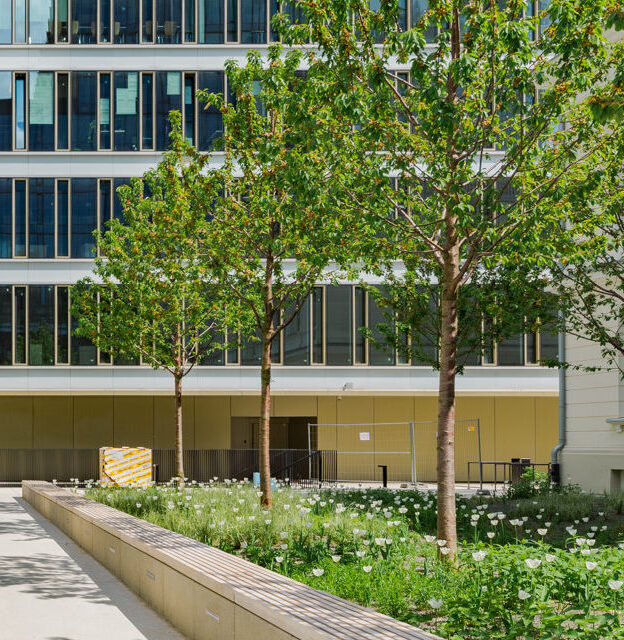As a member of the Polish Green Building Association, we attach great importance to attention not only to meet the technical requirements of a sustainable investment, butwe are also interested in solutions for the surrounding areas, which together with buildings constitute a coherent whole. We are convinced that thanks to green construction, we can significantly reduce CO2 emissions, improve air quality and consumption of non-renewable resources. Choosing the path of sustainable development allows to counteract the negative effects of urbanization.
What is biodiversity?
Without biodiversity, there would be no human on Earth. It is a variety of species and ecosystems, i.e. collections of microorganisms, plants and animals, as well as their mutual interaction with the environment. Unfortunately, never before has it been diminishing at such an alarming pace. That is why biodiversity is also important in ecosystems created by people, i.e. urban settlements. The influence of nature on our life also confirmed by numerous studies, incl. carried out in Denmark, which show that people living more than 1 km from the nearest green area showed greater problems with health than people living closer.1 Moreover, people living far from nature were 1.42 more likely to experience stress than those who had contact with it at a distance of up to 300 m. These studies show how important a role in maintaining mental and physical health has the presence of nature in urban investments.
Let us follow good examples
An excellent example of a change in the approach to greenery in the city is Browary Warszawskie, an investment where we had the pleasure to cooperate with the investor. Thousands of different plants, trees over 15 meters high, lush shrubs, perennials please the eyes of the inhabitants and visitors to this space. The flower meadows made a special impression in the summer and autumn, impressing with the multitude of colors, variety of species, complemented by numerous houses for insects, bird feeders and drinkers.
Residents of housing estates expect from green spaces not only aesthetics, but also functionality, therefore the implementation of such large investments is always huge a challenge. Observing the construction investment market in Poland, we are pleased with the increasing popularity of biophilic design, which introduces natural elements which are an integral part of the investments. An example here are green roofs or terraces, facades overgrown with climbers, internal gardens. These types of spaces are not only only a decorative function – their soothing effect on human well-being is appreciated, which, in the context of the current pandemic situation, is as important as physical health. “Green facades” are not only a pleasant arrangement, but also reduce pollution and provide a form of sound insulation or effective dust absorber. We wish for ourselves, and for our partners and users, even more investments of this type, which treat comfort of use of space in a holistic view, including its green surroundings.
